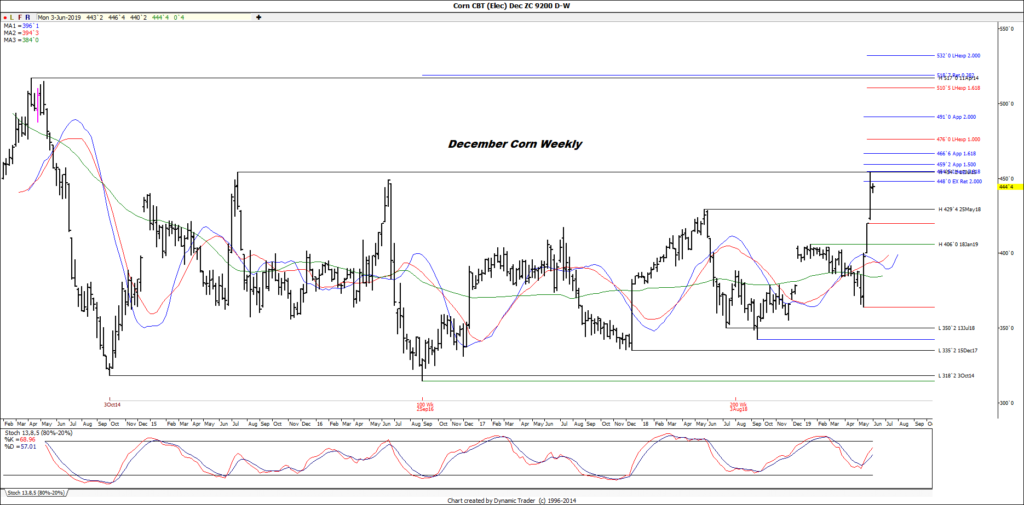By: Dan Hueber –
Stepping out of the house this morning and being greeted by 49-degree temperatures, I was unsure if it was the 3rd of June or the 3rd of April, but at least it was not raining. When I was in Des Moines on Friday, one of the producers from Market to Market commented that it had then been 50 hours without rain, which almost felt like a dry spell. Most forecasts that I have seen in the past 24 hours appear to have conditions, at least for the upper Midwest drying out some and no doubt, if that is correct, we will have planters rolling where ever possible.
The slightly improved forecast and renewed trade war concerns appear to have been enough to kept buyers in corn predominately sidelined this morning. Everyone knows the clock is ticking rapidly toward the midnight hour for corn planting and one has to suspect that until we have a better handle as to what is in the ground and a peak or at least a good forecast for what may be in store for the pollination period, it will be difficult for bears to muscle much of push to the downside. On the other hand, unless we feed the bulls with fresh fodder, each extending any gains beyond this current level could be a challenge as well.
The million, or rather billion(s) of dollars question is, have prices risen high enough to provide the incentive to plant corn beyond the norm? Of course, in certain circumstances, no price will be high enough as it will be physically impossible, but I suspect with new crop prices around or above 4.00 for many, that answer more often than not will be yes. There have been conflicting stories for Washington able edibility for MFP payments, but as it stands, you need to have planted a qualified crop to receive anything. Considering congress cannot even come to enough of an agreement to fund the aid package, I would not count on opening payments to barren acres.
The wheat market has picked up the rally mantle this morning, inspired not only about concerns with the wet conditions domestically but dry conditions elsewhere around the globe. Late last week the Australian weather bureau stated that dry conditions could persist down under for several more months and there are now increasing concerns about dryness in the Black Sea region.
While by no means comparable to the African Swine Flu outbreak, China has now also confirmed an outbreak of H5N6 bird flu in the Xinjiang region. According to the official report, they will cull around 12,000 birds in an effort to contain the disease. While this may not spread any further, it would potentially complicate their attempt to step up other meat production to compensate for the problems with pork and of course is not a promising sign for feed grain/soy demand either.
Needless to say, there will be an intense focus on the planting updates this afternoon. The trade will be expecting to see corn come in between 65% and 70% complete and beans somewhere close to 40%. On the final leg home of my trip last week, Iowa by far had made the most progress of anywhere I traveled, but again, it was an eye-opener to have seen first-hand just how far behind everywhere I traveled was.
